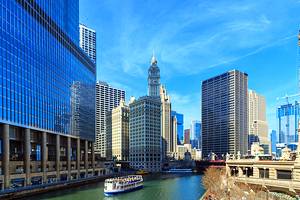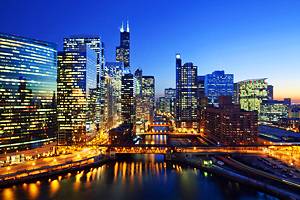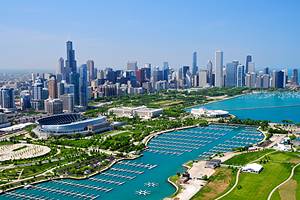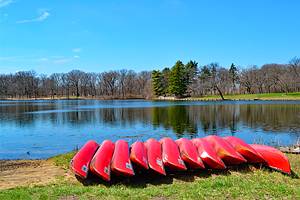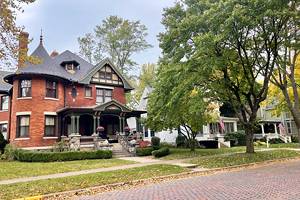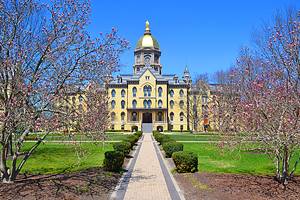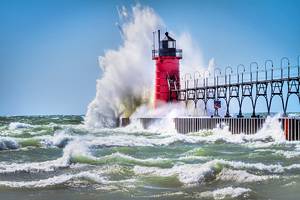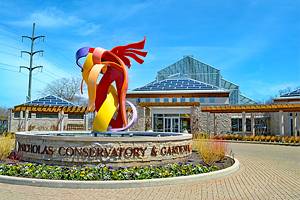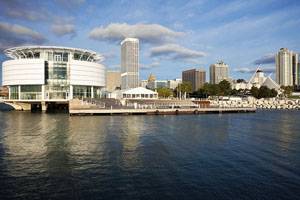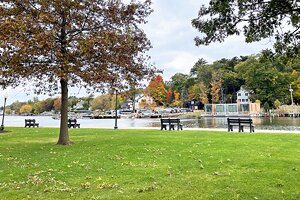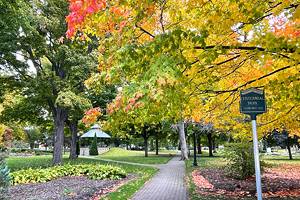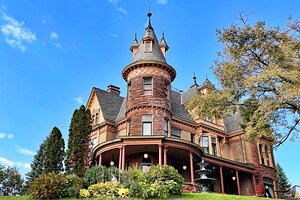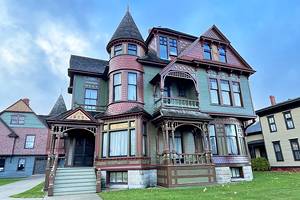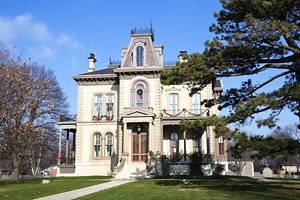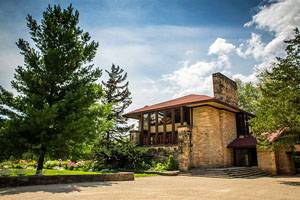Parks in Chicago
Many of Chicago's most popular parks are located near the water's edge in a group of green spaces that are collectively referred to as the Grant Park neighborhood. This group includes top picks like Millennium Park and Maggie Daley Park at the northern end, and Grant Park near the Field Museum and Shedd Aquarium. The extensive Burnham Park extends south along the shore from there, home to numerous beaches, marinas, and top Chicago tourist attractions.
Despite the hustle and bustle of many sections of the city parks, visitors will still find plenty of quiet, contemplative spots for a picnic in the shade or a peaceful midday rest to admire nature. Whether you are looking for exciting seasonal events, playgrounds, or stunning formal gardens, find your favorite with our list of the best parks in Chicago.
Millennium Park
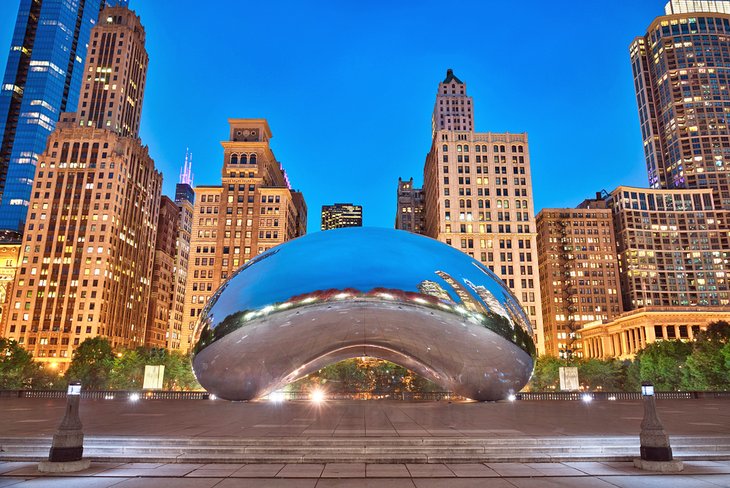
Covering 24.5 acres in downtown Chicago, Millennium Park is home to many of the city's top attractions, including Cloud Gate and Crown Fountain. Cloud Gate, more commonly known as "The Bean," is a 110-ton sculpture made of polished stainless steel, created by artist Anish Kapoor and inspired by a drop of liquid mercury. Its surface is mirror-like, and the structure spans 42 feet from end to end with an archway in the center for visitors to admire from beneath. The area surrounding the Bean becomes a public ice-skating rink in the winter.
In the southwest corner of the park is Crown Fountain, a public art installation that projects photos of local residents onto a screen. The screen, in turn, serves as a fountain that spews water so that it appears to come from the person's mouth like a gargoyle. The water is active during summer months from 10am to 8pm, and the fountain is flanked by two 50-foot glass towers that sit at the ends of a reflecting pool.
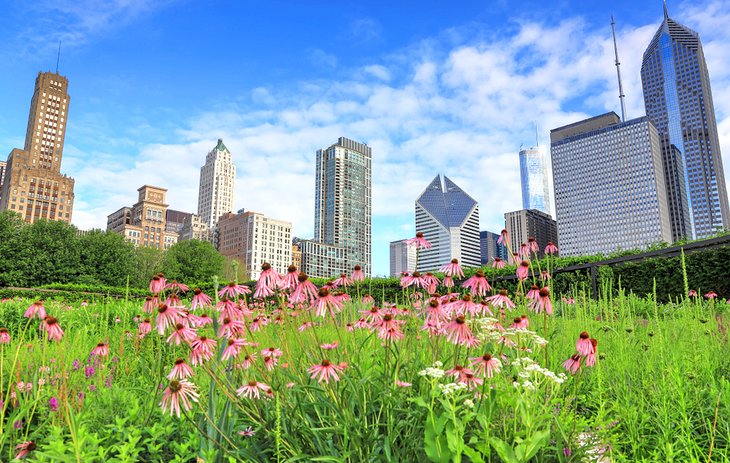
Lurie Garden occupies five acres in the southeast corner of the park. This open botanical garden has a variety of flora that blooms year-round. Its most distinguishing feature is the Shoulder Hedge, and other highlights include blooming spring bulbs and perennials.
Beyond the garden to the north is the Great Lawn, which gives way to the Jay Pritzker Pavilion, a stage that hosts the Grant Park Orchestra for free summer concerts. The pavilion is also used during annual events, including the Chicago Jazz Festival, Chicago Blues Festival, and Grant Park Music Festival.
Wrigley Square is another lovely area of the park, distinguished by the Millennium Monument, a set of imposing columns that sits behind a large circular fountain. Visitors will find a variety of changing art installations throughout the park, as well as food and beverage vendors. There are shaded picnic tables and benches throughout the park.
For elevated sightseeing, take a walk up one of the two pedestrian bridges: one connects to Maggie Daley Park and the other leads to the Art Institute.
Lincoln Park
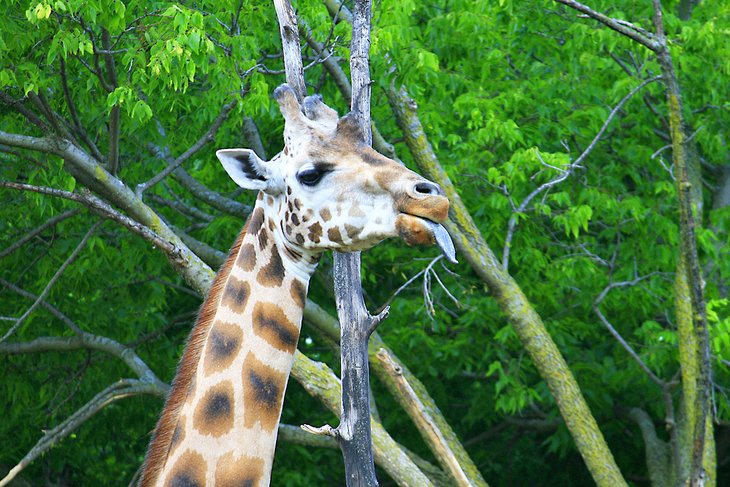
This diverse park stretches six miles along the water's edge north of downtown Chicago, offering a wide range of things to see and do.
One of the most popular attractions within the park is the Lincoln Park Zoo, one of the oldest zoos in the nation. It is home to over 200 species of animals, with designated exhibit areas that showcase family favorites, including two-toed sloths, western lowland gorillas, African penguins, lions, and giraffes, among many others. Home to more than just fauna, the zoo also has beautiful gardens that feature more than 1,200 species of plants.
Another top attraction in this park is the Lincoln Park Conservatory, home to a stunning Victorian-era glasshouse and numerous gardens. In 1887, four greenhouses were added, including the Orchid House, Palm House, Fern Room, and Show House. Outdoors, visitors will find the Formal Garden, also added in 1887, as well as the English Grandmother's Garden and several points of interest including the Shakespeare Monument, Bates Fountain, and Von Schiller Monument. Both the conservatory and the zoo are free to the public.
Other attractions within the park include the Lincoln Park Cultural Center, the Standing Lincoln Monument, the Alfred Caldwell Lily Pool, the Hans Christian Andersen Monument, and the Benjamin Franklin Monument.
The park is also home to numerous baseball fields used by local groups, a skate park, and a golf course. There are also plenty of accessible trails that are used for running, rollerblading, and strolling. The Chicago History Museum is located in the southwest corner of the park.
Jackson Park
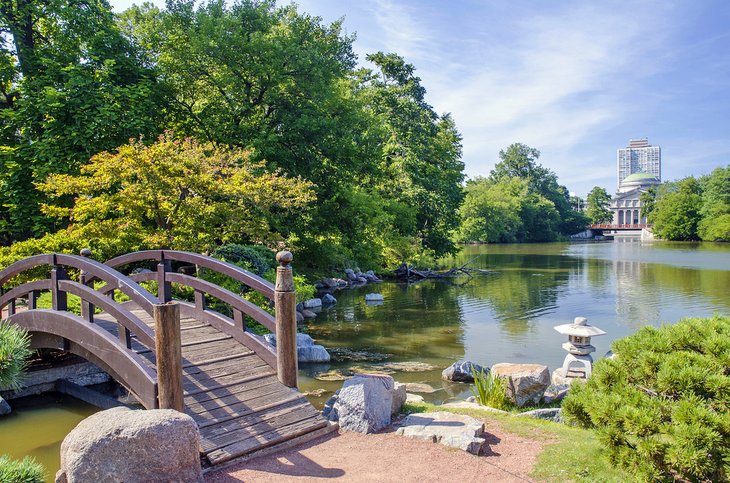
Located on Chicago's South Shore, this park was designed in 1869 by Chicago landscape architect Calvert Vaux and his colleague, renowned Frederick Law Olmstead.
Accessible via a footbridge, one of the park's most beautiful features is the peaceful Wooded Island. It is home to a Japanese sanctuary, known as the Osaka Garden or Garden of the Phoenix, which features a pagoda, rock gardens, and a teahouse. The lagoons surrounding the island are popular with bird-watchers and fishermen.
Recreational facilities within the park include a driving range, golf course, disc golf, tennis and basketball courts, a running track, and several playgrounds. The park is also home to three beaches: the 57th Street Beach, 63rd Street Beach, and the 67th Street Beach, all of which have on-site facilities and food. A harbor with numerous boat slips can be found at the southern end of the park behind the 67th Street Beach.
At the far northern end of the park sits the Museum of Science and Industry, a fantastic museum with hands-on exhibits that will interest all ages, and an OMNIMAX theater. If visiting in the spring, look for the cherry blossoms in the Columbian Basin just outside the museum.
Garfield Park
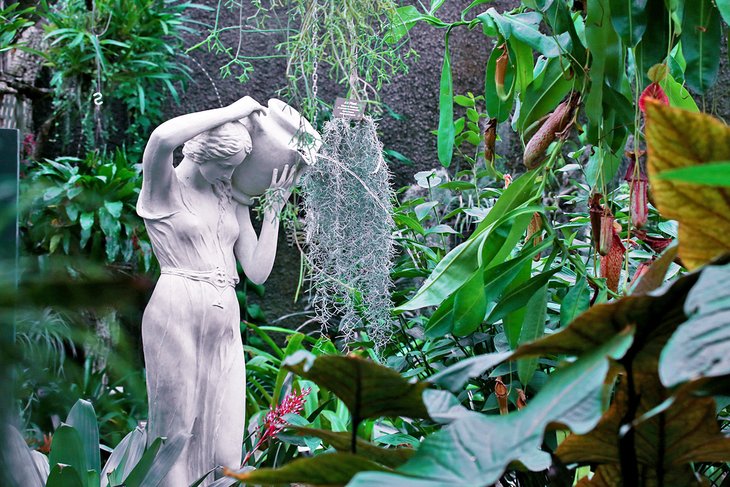
This park's prime attraction is the Garfield Park Conservatory, built in 1908 and home to over an acre and a half of indoor gardens and 12 acres of seasonal outdoor gardens. It is located in the northwest corner of Garfield Park, and each year is home to around 120,000 plants that represent 600 species.
The Palm House is the largest of the greenhouses, home to not only a variety of large palms but also other tropical plants which thrive in the warm, moist air.
Another of the more remarkable indoor gardens is the Aroid House, which contains a stunning collection of glass lily pads created by artist Dale Chihuly. Other glasshouses include an educational Children's Garden, the Artist's Garden, the Desert House, and two exhibit gardens.
This West Side park covers a total of 184 acres and is also full of recreational facilities. Its centerpiece is the Garfield Park Gold Dome Field House, an imposing building that overlooks the Garfield Park Lagoon. The Garfield Park Natural Area sits to its rear just across Central Park Ave, and beyond that is a playground.
Unlike most other city parks, there is vehicle traffic throughout Garfield Park, with the green space sectioned off into city blocks. The Garfield Park Bandshell is located in the section just south of the field house, with several sports fields beyond that, including tennis and basketball courts, soccer and baseball fields, and a second playground.
Burnham Park
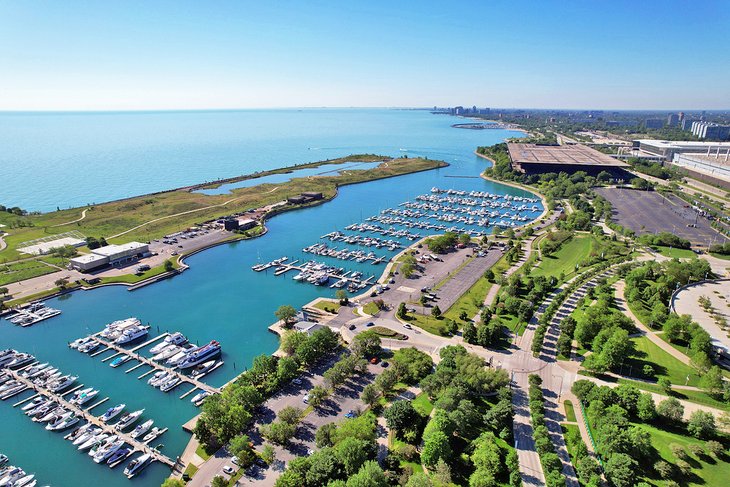
Burnham Park stretches six miles along the shores of Lake Michigan's Oakland Shoal from 14th Street to 56th Street, covering just shy of 600 acres of waterfront. The large Burnham Harbor takes up the shoreline from the park's northern end to 22nd Street, well-protected by Northerly Island. Burnham Park starts at the southern end of Grant Park, and is home to numerous attractions including Soldier Field, home of The Chicago Bears.
South of the stadium is McCormick Place, a large performance venue which also maintains a Bird Sanctuary just off the Lakefront Trail, an 18-mile paved path that follows the shore from Ardmore Street to 71st. The park continues to extend south in a narrow band, offering numerous parking lots for access from many points along the way. 31st Street Beach (also known as the Margaret T. Burroughs Beach and Park) sits just north of a large marina that offers fishing charters and water sports rentals.
At the southern end of the marina sits the Burnham Skate Park, a popular place for skateboarders and rollerbladers. Farther south, visitors will find a rotunda, tennis courts, and eventually Oakwood Beach where there is a fishing pier. There is another small beach at 49th Street, and the park ends at Promontory Point, which has a field house and playground.
Northerly Island is also part of this park, running parallel to the mainland opposite Burnham Harbor. It is home to major tourist attractions including the Huntington Bank Pavilion, Adler Planetarium's Doane Observatory and Skyline Walk, and Daphne Garden. The island also has a good visitor center, a nature park that also hosts music events, and a good beach with amenities.
Grant Park
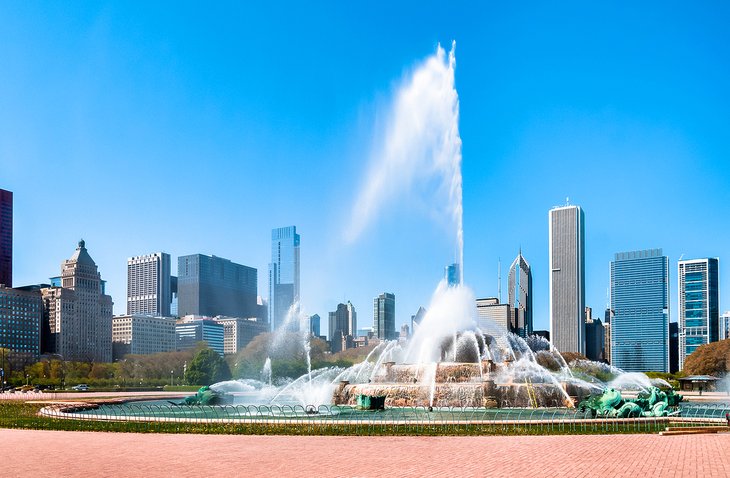
Although Grant Park is also used to refer to the cluster of green spaces stretching from East Randolph Street to West Rosevelt Road, it is more regularly referring to the sections of that area which are south of Millennium Park and Maggie Daley Park. The main public space within Grant Park is its central section, sandwiched between Butler Field and Hutchinson Field, which are utilized for local sports.
The centerpiece of Grant Park is the Buckingham Fountain, a stunning Rococo fountain built in 1927 and inspired by fountains at the Palace of Versailles. This massive piece of art features three tiers of cascading water and numerous spouts within the surrounding pool, as well as four sculptures depicting seahorses in an Art Deco style that swim around it. There are 20-minute water shows every hour during the day between May and mid-October, and light shows in the evenings.
The spaces surrounding the fountain are home to lovely formal gardens with wide paved walkways, with the South Rose Garden a highlight. The Lakefront Trail can be accessed easily from the eastern side of the fountain plaza.
Maggie Daley Park

Situated next to Millennium Park, Maggie Daley Park sits on over 20 acres next to the waterfront in downtown Chicago. The park's most popular kids' attraction is a mini-golf course, which has a series of the city's most iconic buildings and landmarks at each hole. The Play Garden is a big hit with younger kids, where they can play pirate on a huge land-bound ship complete with rope bridges and plenty of room to imagine.
One of the park's most popular attractions is its skating area, used by roller skaters in warm weather and ice-skaters in the winter. Inside this quarter-mile ribbon that's used for practice and competitions sits a 40-foot climbing wall. Skates are available to rent, but during busy times, the wait can be extensive; lockers are also available.
Ping Tom Memorial Park
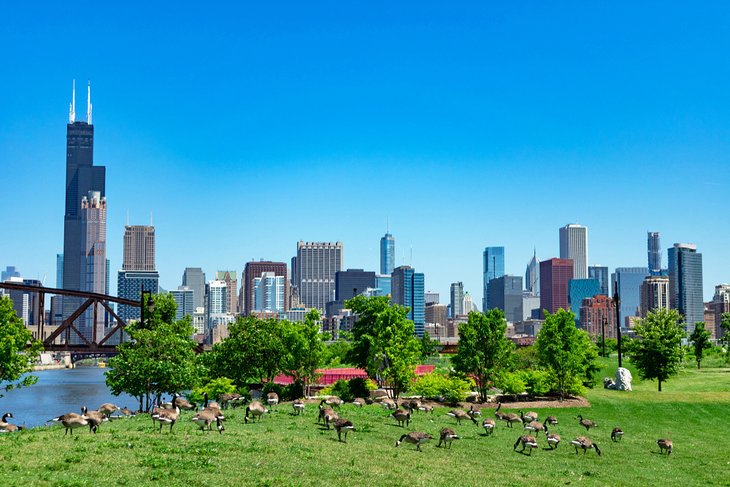
This waterfront park stretches along the South Branch of the Chicago River in the heart of the Chinatown neighborhood. Formerly a railroad yard, the space is now a green oasis that covers over 17 acres.
A large Pagoda provides shade as it sits at the park's center overlooking the water, and next to that is the large circular playground. Nearby, visitors can rent a kayak at the Boathouse or hop on a water taxi to enjoy a different perspective of the park; the dock is also open to the public for non-motorized craft.
The Field House, finished in 2013, offers a wide range of recreational facilities including a pool with slides, locker rooms, a fitness center, and a lovely patio with views of the Chicago skyline. The park also hosts events throughout the year, including regular Shakespeare in the Park productions and free movie nights.
South Shore Cultural Center Park
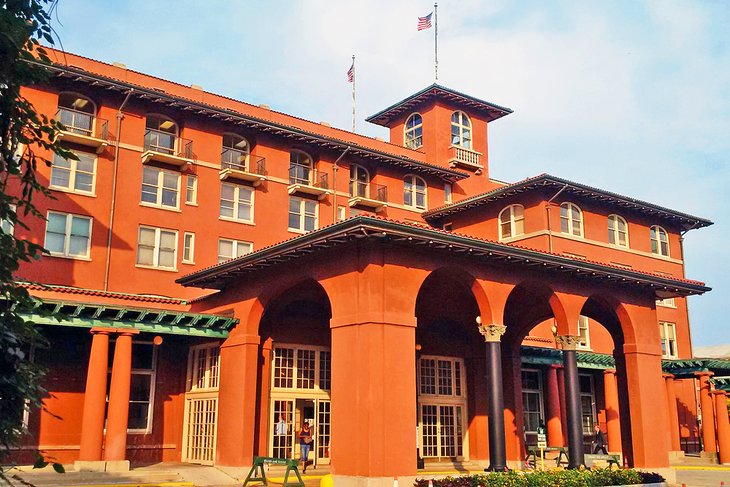
Located on the lakefront just south of Jackson Park, this park has 65 acres of green space and is home to the South Shore Cultural Center, originally built in 1095 as a country club. Today, the center is a historic landmark maintained by the Chicago Park District and offers a large variety of cultural programs, including classes for all ages in culinary arts, music, dance, and visual arts, as well as special events throughout the year.
The parkland surrounding the center includes a golf course, acres of green grass dotted with shade trees, a beach, and the South Shore Nature Sanctuary. The sanctuary is a six-acre protected area that includes wetlands, dunes, woodlands, and prairie habitats. There is a boardwalk over the wetland area, and this is a top destination for bird-watching.


